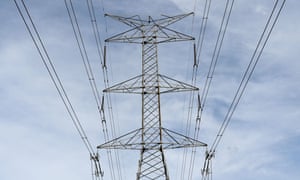‘Cool heads’ not ‘politicking’ needed to bolster Australia’s electricity network, Grattan Institute says
“Cool-headed policy”, not “panic and politicking” is the answer to Australia’s future energy issues, a new report has found.
But government underwriting of new power generation investment, a key Coalition energy policy, could hinder, not help the bid to bolster network reliability, the researchers warned, by scaring away “genuine potential investors”.
Instead, researchers from The Grattan Institute recommended, among other things, a better management of the distribution of Australia’s existing supply of power while encouraging Australians to invest in their own back-up supplies, as the technology to store renewable energy such as solar becomes cheaper, among potential solutions to the nation’s future power problems.
The Grattan Institute researchers reviewed the last 10 years of Australia’s power issues, and the potential for future problems, as ageing coal-fired power stations come off line, and found problems with transporting power was the “overwhelming source” of Australia’s power reliability problems to date.
But it also warned that would not always be the case, if policymakers
did not find a sustainable and sensible solution to maintaining supply
that did not rely on “false narratives” such as renewable energy sources
were to blame for blackouts.
The report reviewed the mass blackout across South Australia
in 2016, after which the researchers found reporting on power blackouts
increased by up to 10 times despite the actual number of power outages
remaining stable.But government underwriting of new power generation investment, a key Coalition energy policy, could hinder, not help the bid to bolster network reliability, the researchers warned, by scaring away “genuine potential investors”.
Instead, researchers from The Grattan Institute recommended, among other things, a better management of the distribution of Australia’s existing supply of power while encouraging Australians to invest in their own back-up supplies, as the technology to store renewable energy such as solar becomes cheaper, among potential solutions to the nation’s future power problems.
The Grattan Institute researchers reviewed the last 10 years of Australia’s power issues, and the potential for future problems, as ageing coal-fired power stations come off line, and found problems with transporting power was the “overwhelming source” of Australia’s power reliability problems to date.
“The overwhelming source of outages is problems in transporting power; it has nothing to do with whether the power was generated from renewables or coal, or some other technology,” the Grattan researchers concluded.
“Over the past 10 years, more than 97% of outage hours could be traced to problems with the local poles and wires that transport power to homes and businesses.
“If we respond to wrong information, we are likely to add to the cost of electricity while making little or no impact on reliability.”
The South Australian blackout, which led to the state’s entire grid failing, was found to be the result of several factors, including tornado damage to high-voltage power lines, wind farms disconnecting from the grid due to heavy disturbance and the Victorian Heywood interconnector disconnecting.
South Australian power stations had suffered from lightning strikes, delaying attempts to restore power at a local level, meaning power had to be reconnected through Victoria, which took longer.
But blame was immediately levelled at the then state Labor government’s renewable energy push, leading to an energy policy debate which helped topple Malcolm Turnbull as prime minister and looks set to continue into the next election.
Labor has committed to increasing investment in renewable energy technologies, while the Coalition maintains a “technology neutral approach”, which includes new coal-fired power stations, as long as it brings down costs.
The recent heatwaves across eastern Australia came with warnings of potential overloading of the energy networks, leading to further calls for ‘reliable baseload power’, particularly from coal proponents.
The Grattan report found just 0.1% of blackouts over the past 10 years during extreme weather were the result of a lack of power generation.
But the report also acknowledged that as power stations such as Liddell and Hazlewood came to the end of their life cycle and were decommissioned, more pressure would be put on the network to meet demand.
But they warned “cool-headed policy” not “panic and politicking” was needed to ensure Australia remained connected.
“As more old coal generators are closed and summer heatwaves become more severe, outages will increase unless investment in new supply follows,” it found.
“A stable policy framework to reduce emissions and ensure that retailers have enough supply will encourage that investment and keep this problem rare.
“Further reforms, such as a centralised capacity market, or direct government intervention to support investment are not required.
“… Increasing renewable generation does create challenges for an aging power system. But energy market authorities have taken significant steps since the SA blackout to ready the grid for a future with much more wind and solar generation.”

No comments:
Post a Comment